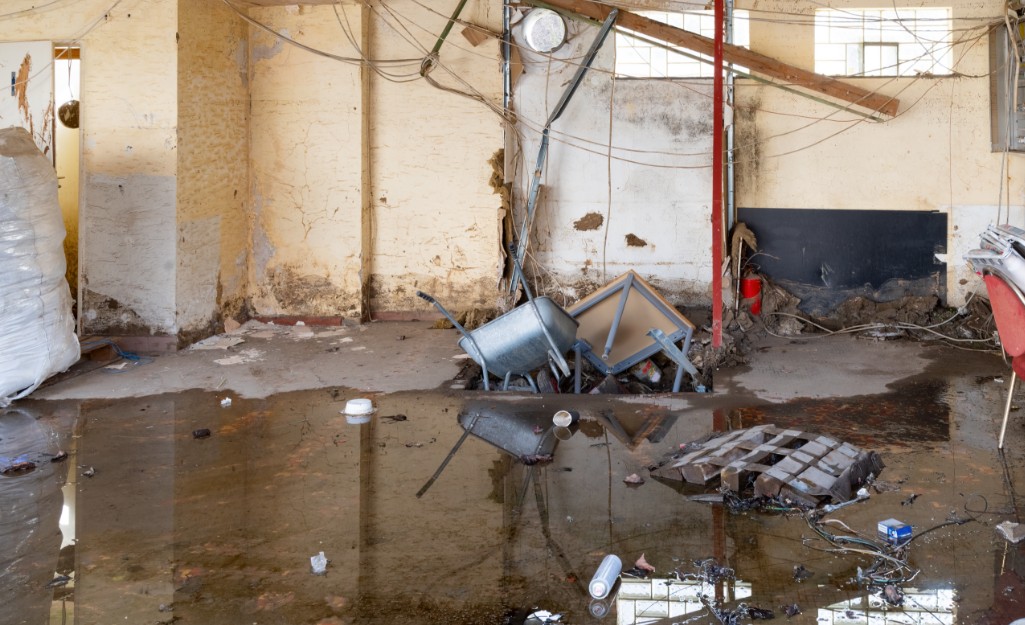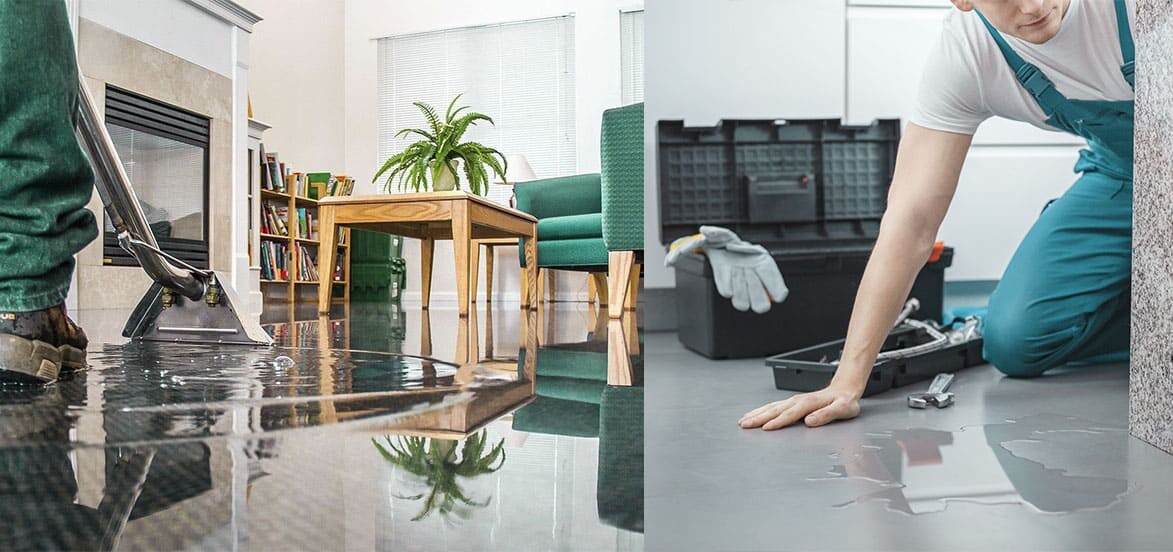What to expect from professional Water Damage Restoration
Water Damage Restoration 101: Recognizing the Process and Cost
Water damage can strike unexpectedly, leaving property owners in a state of confusion. Comprehending the reconstruction procedure is essential for effective recovery. From assessing the damage to choosing the appropriate solution supplier, each action affects the general result and expense. Aspects such as the kind of water damage and seriousness additionally play a significant function. What are the particular techniques used in remediation, and exactly how can one get ready for possible costs?
Kinds Of Water Damage
Water damage can occur from various sources, each providing special difficulties for remediation. The three primary kinds of water damage are classified based on contamination levels: tidy water, gray water, and black water. Tidy water originates from resources like busted pipes or rainwater, positioning very little health risks. Gray water, that includes wastewater from sinks or washing makers, has impurities that might trigger discomfort or disease if consumed. Black water, the most hazardous classification, comes from sewage or floodwaters, having unsafe germs and pathogens. Each kind demands details repair strategies and precaution to properly attend to the damage and reduce health and wellness risks. Recognizing these differences is vital for professionals and house owners involved in the water damage reconstruction process.
First Assessment and Inspection
A complete first analysis and inspection are vital action in the water damage remediation process. This phase starts with a specialist reviewing the extent of the damage, determining the resource of the water intrusion, and determining the kind of water included - Flood Cleanup Services. Technicians utilize specialized equipment to gauge moisture levels in various materials, such as walls, floors, and furniture. Additionally, they assess structural honesty and possible carcinogen, consisting of mold and mildew growth. The findings from this inspection inform the reconstruction strategy, assisting necessary actions and source allowance. Precise documentation of the damage is important for insurance coverage claims and future referral. Generally, this preliminary analysis prepares for reliable restoration, ensuring a thorough feedback to the details situation handy

Water Extraction Strategies
Complying with the preliminary assessment, effective water removal strategies are used to alleviate damage and avoid further concerns. These techniques entail using specialized equipment such as submersible pumps and industrial-grade vacuum cleaners. The choice of method depends on the volume of water existing and the kind of products affected. For standing water, completely submersible pumps are usually made use of for fast removal, while vacuum cleaners are perfect for removing water from rugs and furniture. Additionally, progressed methods like water extraction floor coverings may be employed for hard-to-reach areas. The goal is to eliminate as much water as possible, decreasing the capacity for mold development and structural damage. Trigger and efficient water extraction is crucial in the overall water damage reconstruction process.
Drying and Dehumidification Process
When the water removal is complete, the drying and dehumidification process comes to be vital to restoring the affected area. This phase normally uses industrial-grade dehumidifiers and air movers to properly decrease dampness degrees. The dehumidifiers reel in moist air, eliminating excess moisture, while air movers distribute air to speed up evaporation. Tracking tools is commonly made use of to track moisture and temperature level degrees, guaranteeing optimal drying out problems. The duration of this process can vary depending upon the degree of the water damage and ecological aspects. It is necessary to thoroughly dry all affected materials, including walls, flooring, and furnishings, to stop mold growth and structural damage. Proper implementation of this action is essential for an effective remediation result.
Cleaning and Sanitizing Affected Locations

First Evaluation and Examination
Before beginning any kind of repair efforts, a comprehensive initial evaluation and inspection of the affected areas are vital for effective cleansing and sterilizing. This procedure includes recognizing the extent of water damage, figuring out the resource of the water breach, and evaluating the materials impacted. Assessors normally look for indications of mold and mildew growth, structural honesty issues, and damaged belongings. The evaluation additionally consists of checking wetness degrees making use of customized devices to look at here now guarantee no concealed water pockets remain, as these can cause further difficulties. Recording the searchings for is vital for planning the next action in the reconstruction process. A detailed first evaluation enables reconstruction specialists to develop a targeted technique for effective cleaning and sterilizing, inevitably lessening damage and health risks.
Cleaning Up Strategies and Products
Effective cleaning and sanitizing of water-damaged areas call for a selection of items and methods customized to the particular products influenced. For permeable surfaces like drywall and carpets, extraction methods are important to eliminate excess wetness, followed by deep cleaning with specialized cleaning agents. Non-porous products such as ceramic tile or steel can be cleansed utilizing commercial-grade cleansers that successfully get rid of impurities. Vapor cleaning is one more effective method, specifically for carpets and upholstery, as it utilizes heats to remove germs and mold. In addition, eco-friendly items are progressively preferred for their safety and security and efficiency. Inevitably, picking the ideal cleansing techniques and products not only guarantees immediate tidiness yet also help in avoiding more damage and health hazards related to water invasion.
Sanitization and Disinfection Methods
When attending to water damage, proper sanitization and sanitation techniques are necessary to guarantee the security and health of the afflicted setting. After preliminary cleansing, surfaces need to be treated with appropriate disinfectants to remove pathogens, mold, and microorganisms that flourish in damp problems. Typical methods consist of making use of EPA-approved chemical disinfectants, which can be used through splashing or wiping strategies. Furthermore, ultraviolet (UV) light systems can properly sterilize areas by neutralizing microorganisms without severe chemicals. The choice of approach often depends upon the kind of products influenced and the level of contamination. Ultimately, detailed sanitization not only restores a risk-free space yet likewise assists protect against future health risks connected with remaining dampness and mold and mildew development.

Repairs and Restoration Options

Factors Influencing Restoration Prices
The extent of water damage directly influences the restoration costs home owners can expect to incur. Aspects such as the resource of the water, the duration of direct exposure, and the affected materials substantially influence pricing. Tidy water damage from a damaged pipe is generally less pricey to bring back compared to damage triggered by sewage (Water Damage Restoration). Furthermore, the level of contamination dictates the requirement for specialized cleansing and disposal services, further boosting expenses. Geographic area likewise plays a duty, as regional labor prices and accessibility of repair solutions can vary. Lastly, the urgency of the response affects prices; quicker interventions normally result in decrease overall expenditures by stopping more damage. Recognizing these variables is crucial for house owners when estimating repair expenses
The three key kinds of water damage are classified based on contamination levels: tidy water, grey water, and black water. A detailed first evaluation and inspection are vital actions in the water damage remediation procedure. For standing water, completely submersible pumps are typically utilized for quick removal, while vacuums are ideal for drawing out water from rugs and furniture. The extent of water damage straight affects the restoration costs homeowners can anticipate to incur. Tidy water damage from a broken pipeline is typically much less expensive to restore contrasted to damage caused by sewer.